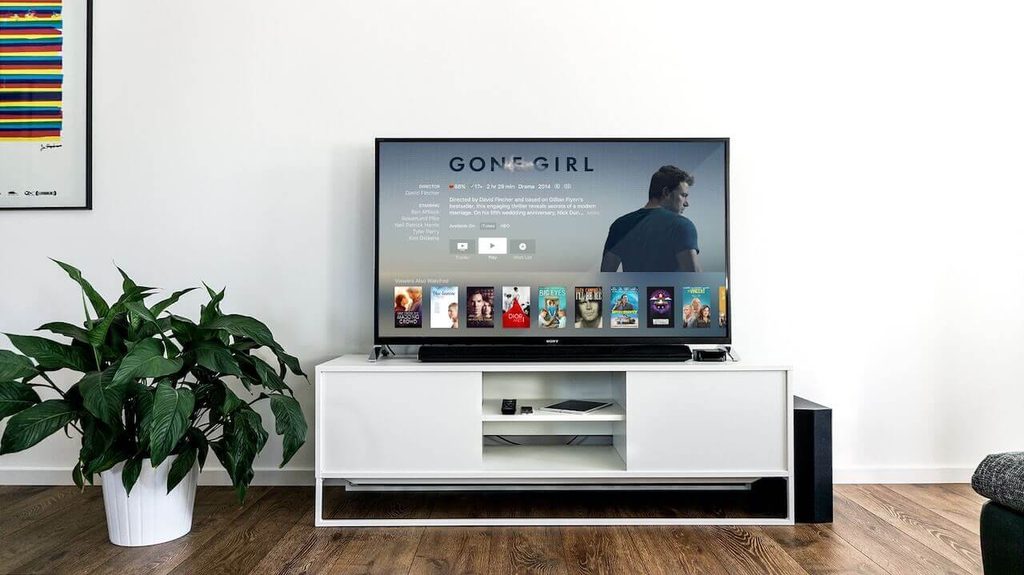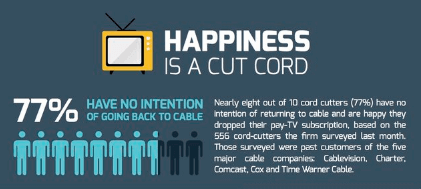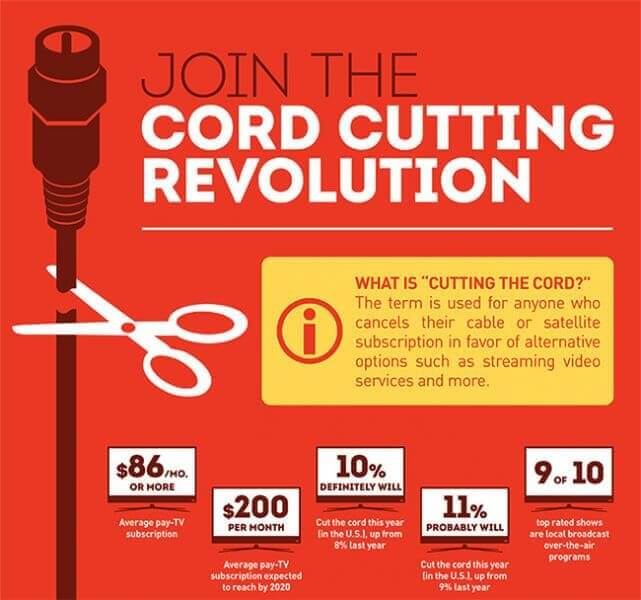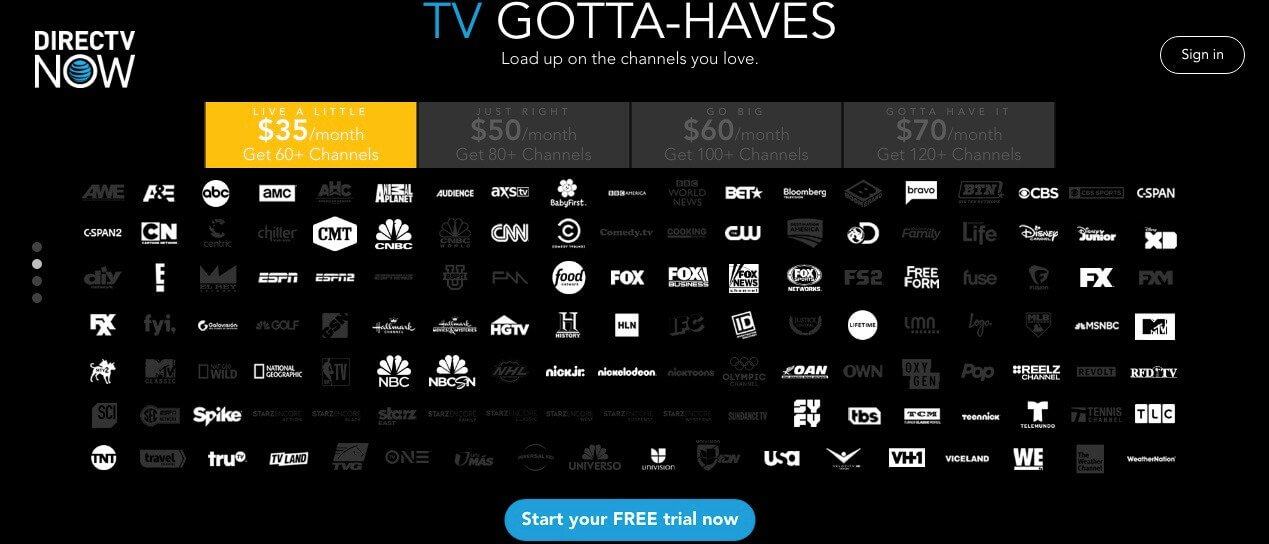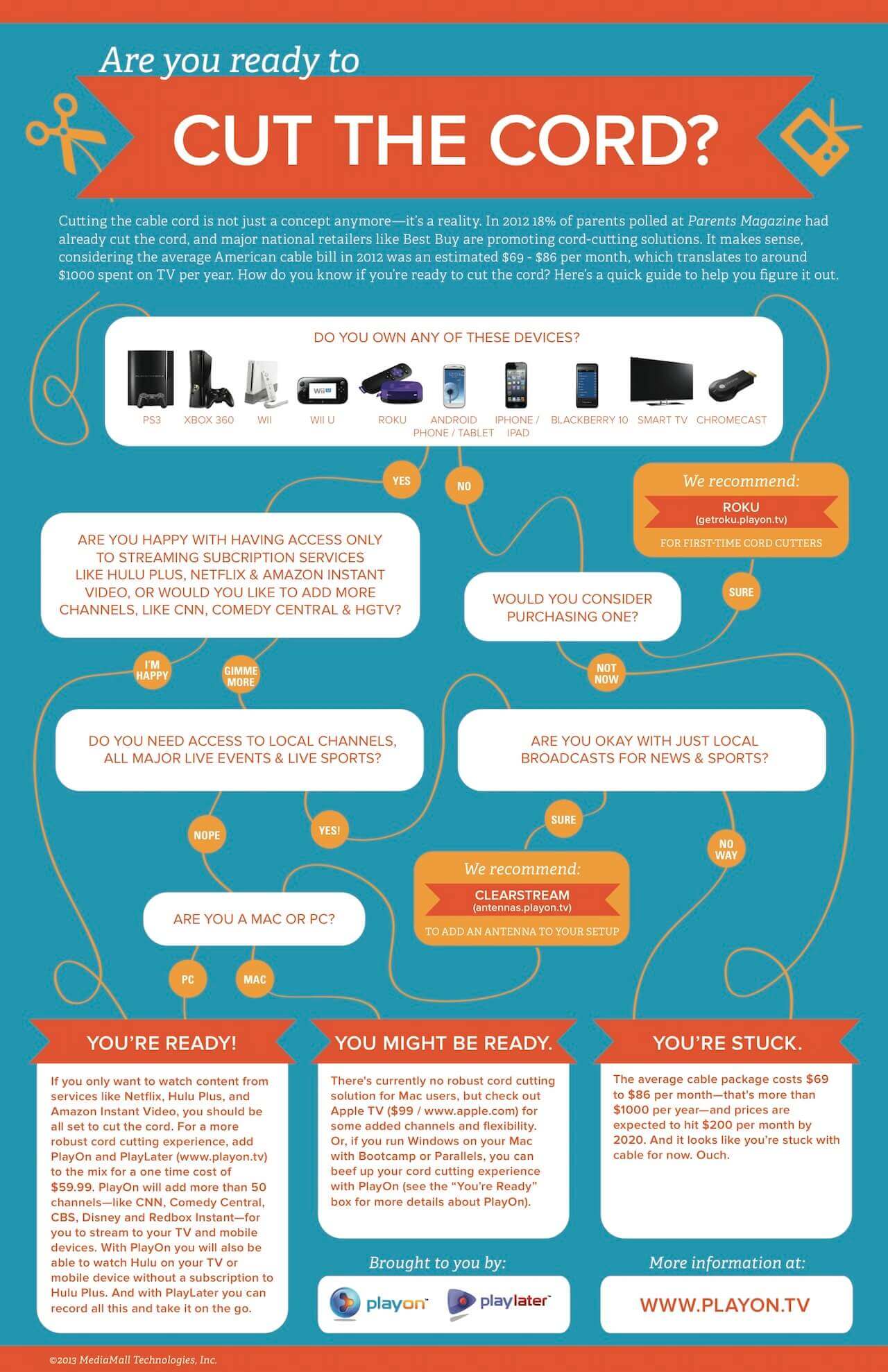If you’re like many other Americans, you probably dislike your cable company. There’s nothing fun about watching a bill for a service rise as the service remains largely unchanged, or worsens.
According to the Leichtman Research Group, in 2016, the average monthly cost for cable TV was $103.10. For reference, that’s four percent more expensive than it was the previous year, and it’s only continued to become more costly.
As a consumer, these rising costs are troubling. Is it worth paying for a service that doesn’t get much better but becomes a lot more expensive? For many Americans, the answer is no. A nationwide phenomenon called “Cut the Cord” or “Cord Cutting” is spreading as more people ditch their cable box for alternative TV options.
1) Who Benefits From Cutting the Cord?
In short, everyone who gives up his or her cable can save money, which makes it a good option for the majority of the population. That being said, there’s one group that especially benefits from transitioning away from cable, individuals 50-years-old and up.
There’s no question that the cost of living seems to increase with age. Once you’ve lived for five or more decades, you’re likely fairly established in your career and starting to look forward to retirement. When you retire, you lose your salary, benefits and a lot of the time your health care, too, until you qualify for Medicare.
Even if people save diligently for these years, their expenses often add up quickly and can become quite cumbersome. So, many look for ways to economize, and one of the easiest targets is a $100 cable bill.
When it comes to cutting cable, some hesitate, even though it can save them $1,000 or more over the course of a year. Even if you only watch less than a dozen cable channels, letting it go can seem unimaginable. Luckily, you don’t have to go cold turkey if you shut off your cable.
Before we delve into the market alternatives, there’s one thing to mention, safety. All of the services below offer free trials. Many online scammers pose as these big-name companies and try to get you to enter your credit card details for a “free trial,” when they’re really trying to access your personal information.
In the event you want to test a provider, make sure you’re on their website. Most of them do require a card to sign up, so if you enter your information, make sure you’re on a secure browser when you do so. If you have any questions about how you can avoid scams, or if you need help differentiating a secure browser from an insecure browser, reach out to My Fast PC directly.
2) Alternative Options
If you want to get a better deal than cable, you have a lot of choices. Depending on your viewing preferences, you might sign up for more than one service. The key is to realize that although you may need more than one subscription, you don’t want to subscribe to every alternative. If you do, your bill will end up being about the same cost.
Sorting through all of the alternative options on the market can be daunting, which is why it’s often beneficial to look at some of the more prevalent options.
A) DirectTV Now
DirectTV Now is an internet TV streaming service from AT&T. The entire offering works on the internet, so you do not need a satellite dish or cable box for access. Furthermore, you don’t have to watch it only on a TV. You can watch from any device that has an internet connection, like a smartphone, tablet or laptop.
When you sign up for the service, you’ll have a few bundles to choose from. One of the most advertised is a package that offers more than 100 channels for less than $60 a month. Overall, this option provides you with nearly everything you can watch now on your traditional cable, plus you can sign up for HBO for only $5 more each month.
Although there are a lot of upsides to DirectTV Now, one of its downsides is its inability to record shows. If you miss a program live, you’ll need to a wait until it’s available on demand, and not every show eventually goes to demand. If you’re someone who likes to record your shows and watch them later, Sony’s PlayStation Vue or Sling TV will be a better option for you.
DirectTV Now offers a seven-day free trial that you can take advantage of by visiting their website.
B) Hulu
Hulu has quickly become one of the best alternatives to cable. It allows you to watch TV content on almost every type of device that has access to the internet. Interestingly enough, Hulu is such a common service that if you have a new TV, you might already be able to stream Hulu directly to your screen.
Hulu was founded as a joint venture by a few TV networks, which means it can offer more TV programming than any other streaming service. In addition to TV, it also provides access to several films that were produced by its partner studios.
In general, there are two types of Hulu subscriptions, paid and unpaid. The free version comes with advertisements. Viewers can either watch long ads at the beginning of their show or several short ads throughout their program. If you have the paid version, you’ll have an advertisement-free viewing experience that won’t interrupt your shows.
Hulu with limited commercials costs around $8 per month, and Hulu with no commercials costs around $12 a month. As with DirectTV Now, you can watch your TV shows anytime, anywhere with a free seven-day Hulu trial.
C) Netflix
Netflix is a service that streams a variety of TV shows, movies, documentaries and more. If you’re someone who loves movies, Netflix will be a great option for you. With a bank of thousands of films and TV shows, you’ll have more options to pick from than you likely do now with cable.
Much like the previously mentioned options, Netflix comes with a free trial. What’s great about their trial is that it’s a month long, so it gives you enough time to really decide if it’s the right service for you.
D) Amazon Prime
Do you have Amazon Prime ? If you do, you probably already know that members are eligible for free one- or two-day shipping, but did you know it has several other perks? Individuals who register for this paid service also have access to streaming video, music, e-books and more.
Users can watch many movies and TV episodes as soon as they subscribe. They also have the advantage to add entertainment channels, like Showtime and Starz, to their account for a few dollars more each month.
Similar to Netflix, Amazon offers a free 30-day trial that will help you become acquainted with its many benefits. In the event you like the service, you can sign up for $99 a year or $12.99 a month.
3) The Right Time
After you try out the different streaming services above, you should have a good idea of which ones you want to subscribe to. At this time, you can also decide what devices you’d like to use to access your membership(s).
As long as the device you use has internet, you should be able to access your subscription on a browser or through an application. What about if you want to watch your new service on a television, though? Since TVs do not normally have internet, you might think that they are unable to play streaming video. However, most televisions can, with the right equipment.
4) Additional Equipment
People who want to stream movies and shows on their TVs need a specific player or TV to do so. Almost every individual who already owns a TV can purchase a streaming device, connect it to their tv, connect it to the internet and then watch programs on their TV.
There are many connective devices on the market, but one of the best is Roku. If your TV has something called an High-Definition Multimedia Interface (HDMI) port, and most newer televisions do, you can easily connect a Roku to your TV. If your TV does not have HDMI, you can contact Roku’s customer service to see if their Roku Express+ device will work with your older television.
Once the Roku is connected, all you need to do is sign on to your internet and then create an account for yourself. From here, you can add channels, like ABC, CW and PBS. You can also sign into services like Sling TV, Amazon Instant Video, Netflix, Hulu and more.
Saving Money, Staying Connected
Cutting the cord comes with many advantages, but one stands out amongst the rest, savings. If you still have cable, you could save $200 a month or more by saying goodbye to your box and signing up for a streaming service.
As you ditch cable and transition to a new service, you might find yourself making a sacrifice or two. Switching up your routine is difficult, and it can take time to find the perfect provider, or combination of providers, that will replace your cable.
That being said, as time passes, you’ll probably come to love your internet-based television and movie watching as much, if not more, than cable. You’ll save money, and you might even soon forget the old-fashioned way you used to watch TV.
